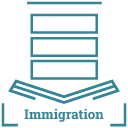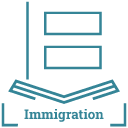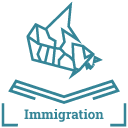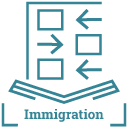Home / Directories
Directories
Immigration to Canada, Classified!
Immigration Library is a classified directory of pathways that offers simplified guides on Canadian immigration policies and programs, helping individuals better understand their options for living in Canada.
Immigration Directories
Select the immigration directories that match your goals and preferences, and gain access to a wealth of information on program definitions, eligibility criteria, draws, point systems, application processes, and other factors relevant to your specific classification.
Classification Based on Admission Type
Class
Economic
Economic class includes immigrants selected for their ability to contribute to Canada's economy by meeting labour market demands, owning, managing, or building a business, making a major investment, or creating their own employment.
Family
Refugee & Humanitarian
Canada's Refugees & Humanitarian programs offer compassionate immigration solutions. Refugees find refuge based on fears or exceptional circumstances. These programs provide a haven for those in need of special consideration or protection.
Classification Based on Worker or Business
Section
Section is a broad classification that divides economic immigration programs to Worker and Business categories.
Worker
The Worker classification includes immigrants being selected for their ability and potential to contribute to Canada's economy through their ability to fulfil the requirements of the Canadian labour market.
Business
The Business classification includes immigrants being selected for their ability to contribute to Canada's economy through their investment and/or their ability to own and manage or to build a business in Canada.
Classification Based on Jurisdiction
Category
All immigration pathways can be divided in 6 different categories based on their jurisdiction (Federal, Provincial and Quebec) as well as the worker or business categories.
Federal Worker
Federal worker category is for immigrants who are being selected under a federal immigration program for their ability to contribute to Canada's economy through their ability to meet the Canadian labour market needs.
Provincial Nominee Worker
Provincial nominee worker category is for those being selected through a provincial nominee program because they can help the economy by meeting the labour market needs of a specific province or territory in Canada.
Quebec Worker
Quebec worker category is for immigrants who are being selected through a Quebec immigration program for their ability to contribute to the province’s economy through their ability to meet their labour market needs.
Federal Business
Federal business category aims to attract immigrants at a federal level based on their ability to contribute to Canada's economy through their investment and/or their ability to own and manage or to build a business in Canada.
Provincial Nominee Business
Provincial nominee business category is for those applying under a provincial business program to help the province’s economy through their investment and/or ability to own and manage or to build a business in that province.
Quebec Business
Quebec business category is for those who are applying under a Quebec business program to help the province’s economy through their investment and/or ability to own and manage or to build a business in Quebec.
Classification Based on Applicant Type
Applicant
The main skill or occupation of the principal applicant can be used to classify the immigration pathways. All available immigration pathways are divided into seven groups.
Caregiver
Caregivers are persons who provide care to others who require self-care assistance. Children, the elderly and disabled people are a few examples. They can be medical professionals, family, friends, social workers, or clergy.
Entrepreneur
The entrepreneurial programs seek to attract people with business experience who have the desire and ability to manage a Canadian business that will benefit the Canadian economy and create job opportunities for Canadians.
Farmer
The farmer programs are designed to attract farm owner/operators with management skills and the financial resources to start a Canadian farming business. They may also help address the labour needs of the Canadian agri-food sector.
Investor
The Investor Programs in Canada are designed with the aim of allowing eligible high net worth passive investors to acquire permanent resident status in the Canada by making a significant investment in the country.
Low Skilled Worker
Low-skilled or semi-skilled worker programs include immigrants working in routine, low-skilled jobs in trades, primary and manufacturing industries, sales and services, and certain clerical and assistant positions.
Self-employed
Self-employed people are those who work independently to operate business or professional activities for themselves, as opposed to working for another employer or to being an entrepreneur or manager.
Skilled Worker
Skilled worker refers to a highly trained, educated, or experienced worker that can complete more complex tasks on the job. Skilled labor is often specialized and may require a prolonged period of training and experience.
Classification Based on Destination in Canada
Destination
Federal
The immigration Programs administered by the federal government are pathways to Canadian permanent residence for individuals who are interested in settling across Canada except the province of Quebec.
Atlantic
The Atlantic programs are pathways to Canadian PR for those interested in immigrating to one of Canada’s four Atlantic Provinces (New Brunswick, Newfoundland and Labrador, Nova Scotia and Prince Edward Island).
Quebec
The Quebec Immigration ministry – Immigration, Francisation et Intégration Québec, offers many pathways to Canadian permanent residence for individuals who are interested in immigrating to Quebec.
Alberta
The Alberta Advantage Immigration Program (AAIP) offers different pathways to Canadian permanent residence for individuals who are interested in immigrating to the province of Alberta.
British Columbia
The BC Provincial Nominee Program (BC PNP) offers many pathways to Canadian permanent residence for individuals who are interested in immigrating to the province of British Columbia.
Manitoba
The Manitoba Provincial Nominee Program (MPNP) offers different pathways to Canadian permanent residence for individuals who are interested in immigrating to the province of Manitoba.
New Brunswick
The New Brunswick Provincial Nominee Program (NBPNP) offers many pathways to Canadian permanent residence for individuals who are interested in immigrating to the province of New Brunswick.
Newfoundland and Labrador
The Newfoundland and Labrador Provincial Nominee Program (NLPNP) offers pathways to Canadian permanent residence for individuals interested in immigrating to Newfoundland and Labrador.
Northwest Territories
The Northwest Territories Nominee Program (NTNP) offers some pathways to Canadian permanent residence for individuals who are interested in immigrating to Northwest Territories.
Nova Scotia
The Nova Scotia Nominee Program (NSNP) offers many different pathways to Canadian permanent residence for individuals who are interested in immigrating to the province of Nova Scotia.
Ontario
The Ontario Immigrant Nominee Program (OINP) offers many different pathways to Canadian permanent residence for individuals who are interested in immigrating to the province of Ontario.
Prince Edward Island
The Northwest Territories Nominee Program (NTNP) offers pathways to Canadian permanent residence for individuals who are interested in immigrating to the province of Prince Edward Island.
Saskatchewan
The Saskatchewan Immigrant Nominee Program (SINP) offers different pathways to Canadian permanent residence for individuals who are interested in immigrating to the province of Saskatchewan.
Yukon
The Yukon Nominee Program (YNP) offers some pathways to Canadian permanent residence for individuals who are interested in immigrating to the territory of Yukon.
Rural Canada
There are also some pathways to Canadian permanent residence designed for individuals who are interested in immigrating to one of Canada’s underserved and rural communities in Canada.
Classification Based on Selection Process
Selection Process
Canadian Experience
There are some immigration pathways that require the applicants to have either Canadian work experience or graduated from a Canadian educational institution before they can apply to the program.
Deposit Required
Immigration programs that require the applicant to make some kind of refundable cash deposit as a condition of the program. The deposit will be returned when the applicant meets the terms of a Performance Agreement.
Education-driven
Employer-driven
There are many Immigration pathways for skilled, semi-skilled and low-skilled workers that require the applicant to obtain a full-time job offer from a Canadian employer before they can apply to the program.
Express Entry
Express Entry is an online system that is used to manage skilled worker applications for Canada immigration. Many federal and provincial immigration programs select their candidates from the Federal Express Entry pool.
Expression of Interest
There are many Immigration programs mostly at the provincial or destination level that use an online selection system to pre-assess and invite their desired candidates before they can submit their application.
Francophone
These are immigration pathways offered by some provincial governments that give the French-speaking candidates an advantage and are designed to attract candidates with knowledge of French language.
Notification of Interest
Some provincial immigration programs under Express Entry system, pulls their candidates from the Express Entry pool and send them a Notification of Interest to invite them to apply to their program.
Point System
Many immigration programs are using some form of selection grid to score their candidates based on various factors including age, education, work experience, language proficiency, etc.
Provincial Nominee Program
All province and territories in Canada except Nunavut have programs to select their immigrants. These are immigration programs for candidates being selected by a province in Canada other than Quebec.
Quebec
The Quebec government manages its own immigration programs, separate from the federal government's immigration programs, and has its own selection criteria and application process to select its candidates.
Sponsor-driven
These are immigration pathways that requires the applicant to obtain some form of support from a family or another Canadian citizen/permanent resident, a group, organization, company or community in Canada.
Permanent Residence is a legal status that allows foreign nationals to permanently reside and work in Canada. It is granted through various immigration programs, such as Express Entry, Family Sponsorship, and Provincial Nominee Programs. Permanent Residents have access to most of the same rights and privileges as Canadian citizens, including access to healthcare and education. They are also required to fulfill certain obligations, such as paying taxes and obeying Canadian laws. Obtaining Permanent Residence involves a rigorous application process that assesses an individual's qualifications, such as their education, work experience, and language proficiency. Overall, Permanent Residence provides opportunities for individuals to establish themselves in Canada and contribute to its diverse society and economy.






